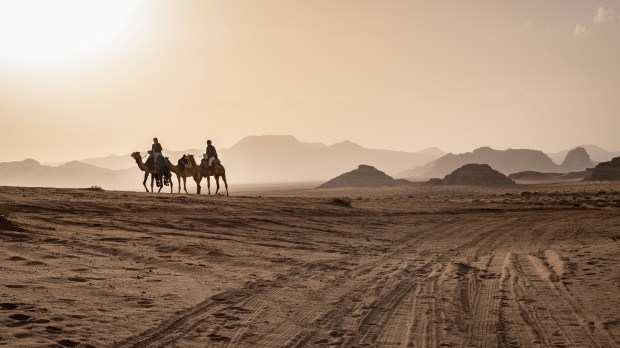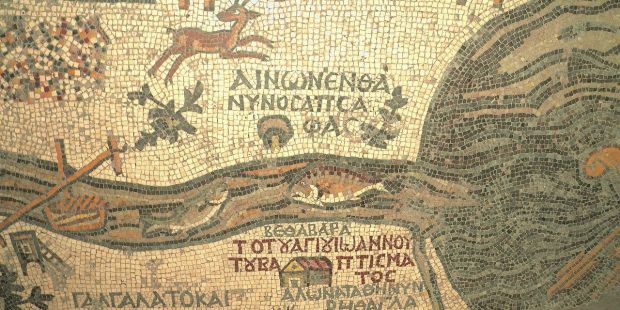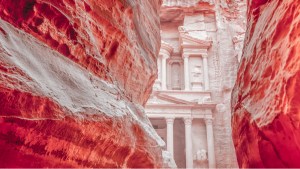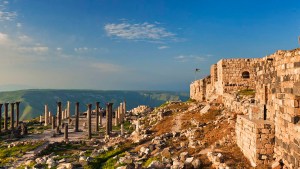Not too far from the ancient Nabatean capital of Petra, the Wadi Rum is a vast desert area in southern Jordan, about an hour’s drive north of Aqaba, the vibrant Jordanian port by the Red Sea.
This desert valley has been inhabited by different cultures since prehistoric times, as is evident from the famous petroglyphs found in the Khazali Canyon. The canyon’s inner walls are covered with Thamudic, Nabatean, and Islamic inscriptions – a remaining testimony of some of the cultures that have lived in the area. Today, several Bedouin tribes inhabit this valley and the surrounding area. Some of them offer the visitor their renowned hospitality during the cold, impressive star-filled desert nights.
In fact, the main central valley of the Wadi Rum is home to the Zalabia Bedouins, who have turned eco-adventure tourism into their main source of income by partnering with climbers and trekkers. Hundreds of climbing routes are still being explored and discovered today all around the valley.
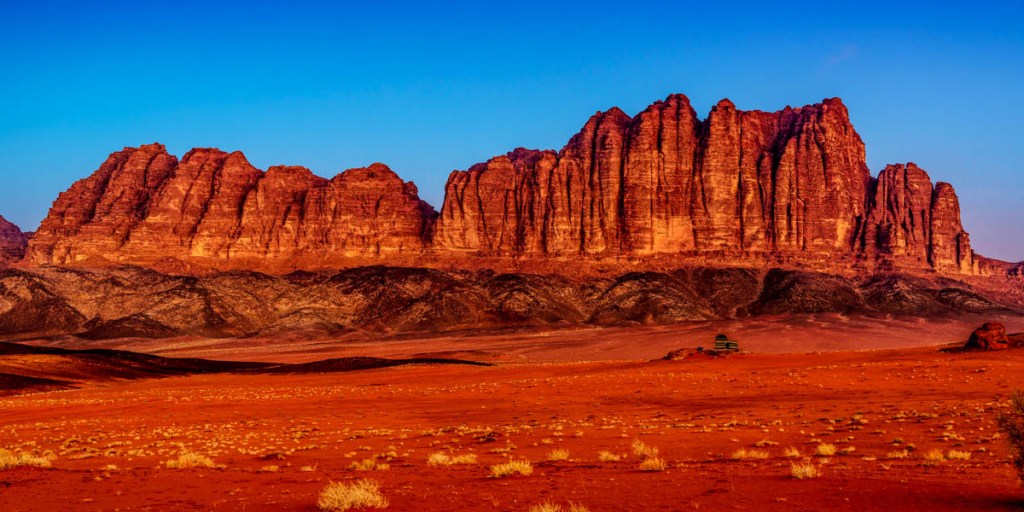
The massive sandstone rock formations of the Wadi Rum do not only preserve petroglyphs, rock paintings, climbing routes, or caves once used by hermits and shepherds. The remains of shrines, water reservoirs, dams, or trading posts either carved in the rock or built directly on the ground are still standing, as they were built (or, more precisely, carved) to last: as the Nabateans grew their influence in the area, the Wadi Rum became an important outpost on the trading route between Petra and Saudi Arabia in Late Antiquity.
Some might be acquainted with the Wadi Rum because of its connection with British officer T.E. Lawrence, who based his operations there during the Arab Revolt of 1917-18. In fact, during the 1980s, one of the most impressive rock formations in the valley was named “The Seven Pillars of Wisdom” – a gesture in memoriam of Lawrence’s book, which he wrote after the war. Some others might remember it from Rogue One: A Star Wars Story, the first of the Star Wars standalone films, released in 2016. Some of the otherworldly landscapes of the movie were not the product of computer animation but real Wadi Rum locations.
The Wadi Rum is mentioned in the Bible, and it was home to Christian monks and hermits in Late Antiquity and even during the early Middle Ages, as the tradition of the Egyptian Desert Fathers extended all the way to this region. Some Bible scholars claim the Wadi Rum is referred to as Aram or Iram in the book of Genesis. Some others affirm it is the land of Uz we find in the book of Job. Others think this is rather part of the land of Midian, where Moses fled after killing an Egyptian, as told in Exodus 2, 11. All these references explain why and how the Wadi Rum had a significant historical connection to various biblical events, and later became a hub of Christian monasticism.
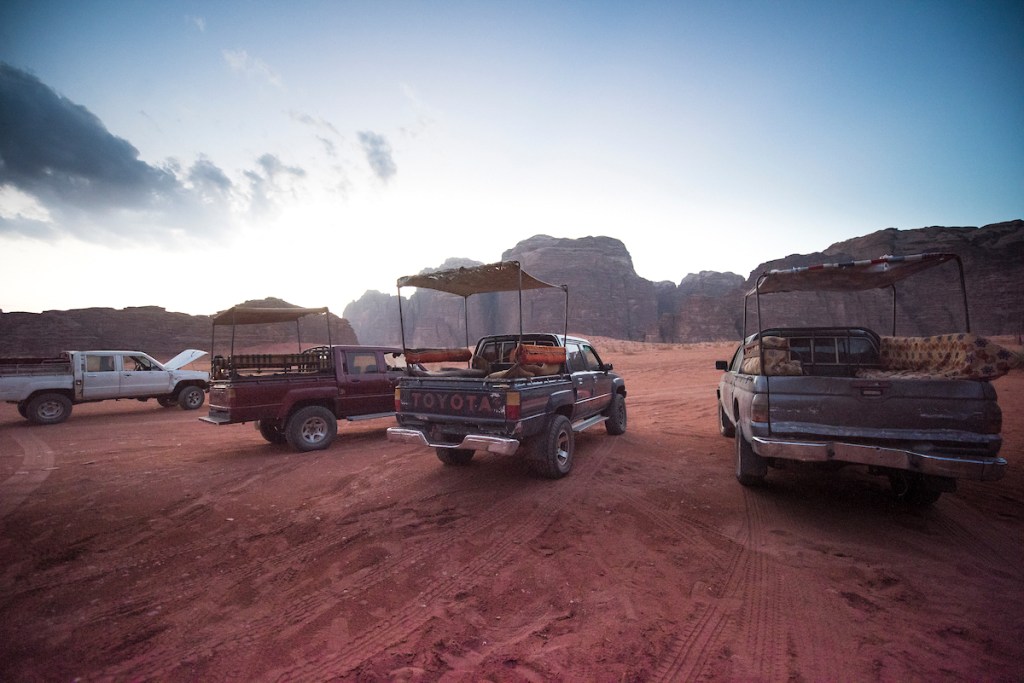
Before the days of the Rashidun Caliphate (the first of the four major caliphates established after the death of Muhammad), the Wadi Rum desert belonged first to the Nabatean kingdom, then to the Roman empire and, finally, to the Byzantines. It was during this last period when, apparently, it got its current name. The inhabitants of the desert (Bedouin tribes who either worshiped Roman gods or had already become Christians) would refer to the Christian monastic and ascetic communities established in the region as “Rum,” that is, “Romans,” a word that would apply to Eastern Romans (that is, Byzantines) and Greek alike.
The desert, however, is also known as the “Valley of the Moon,” the Wadi Al-Qamar, and for good reason. After riding a jeep through the desert, you can have dinner in a Bedouin tent under the stars (the Milky Way is clearly visible in these pristine desert skies, no telescope needed at all), a few meters away from the ancient petroglyphs — or you can also spend the night in one of the many glamping options available. Walking around the desert in the middle of the night, enjoying the proverbial hospitality of the Bedouins, certainly makes one remember the promise God made to Abraham: “I will multiply your descendants beyond number, like the stars in the sky and the sand on the seashore.”
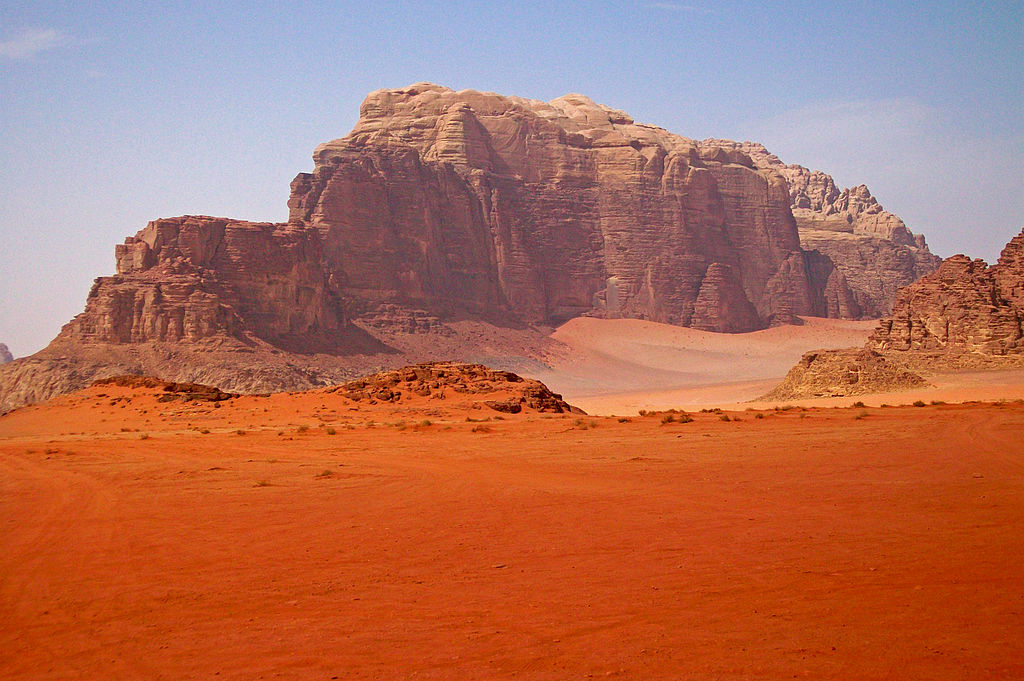
Currently, there is no monastic life in the Wadi Rum, either Catholic or Orthodox. But there is indeed a Christian presence all throughout the country, which keeps a 2,000-year tradition very much alive. And even if monks have not lived in either the desert or the surrounding hillsides for centuries, one can still see, visit, and even enter and rest in the caves where they once did, as they are nowadays mostly being used by shepherds while their herds graze around.
This content has been brought to you in partnership with the Jordan Tourism Board.
Make sure to visit the slideshow below to discover 10 other great tourist and pilgrimage destinations in Jordan.
